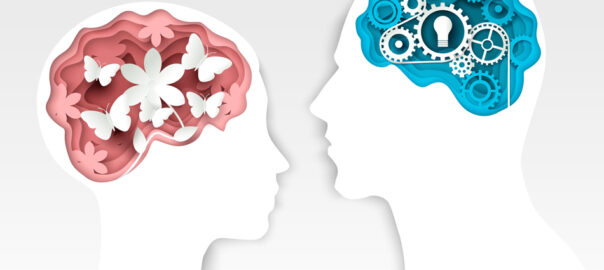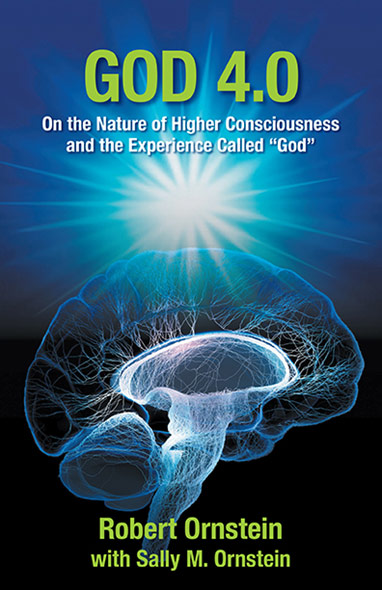
Conditioning and the Gendered Brain
Denise Winn | January 25, 2023
A friend was telling me about how she had managed to get herself completely lost one day in an area she was familiar with. “I have a terrible sense of direction!” she trilled, and then stopped and made a gesture that encompassed the two of us. “Well, obviously,” she added, with a rueful smile.
I realised she was referring to what she thought likely to be a shared affliction, seeing as we were both women and that I do have a rather unhelpful default position of wanting to turn left on leaving any building. However, the concept, enthusiastically popularised by the media, that women generally have poorer spatial abilities than men is much more likely to be based in conditioning, rather than innate, biologically determined differences.
I interviewed cognitive neuroscientist Gina Rippon a few years ago, on the publication of her book The Gendered Brain: The New Neuroscience that Shatters the Myth of the Female Brain. She describes in the book how findings from what were at the time (early 1990s) relatively new and comparatively unsophisticated brain scanning techniques ‘confirmed,’ at brain level, beliefs that, for instance, women are more emotionally articulate than men (they showed better connections between the left and right hemispheres of their brains); and that males have more spatial awareness (enlargement in the cortical areas associated with visuo-spatial processing). Visiting such studies retrospectively, however, has thrown serious doubt on their findings.
Most recently, in 2021, neuroscientist Lise Eliot, Professor of Neuroscience at Chicago Medical School, and colleagues at Chicago’s Rosalind Franklin University of Medicine and Science, published in Neuroscience and Biobehavioral Reviews a comprehensive synthesis of three decades of human MRI and post-mortem data. They focused most particularly on meta-analyses and large studies, which, they found, “collectively reveal few reliable sex gender differences and a history of unreplicated claims.” The undisputed fact that male brains are larger than female brains right from birth apparently accounted for the brain sex differences such as a higher white/gray matter ratio. And when identifiable structural and lateralisation differences were found even after accounting for brain size difference, sex or gender explained just one per cent of the variance.
This is not to say that scientists have stopped looking, although the emphasis may be different. For instance, at the Shah Laboratory, housed in Stanford’s Department of Psychiatry and Behavioral Sciences and the Department of Neurobiology, the goal is “to understand how the brain, seemingly indistinguishable between men and women, generates sex differences in behaviors.”
Perhaps a key element is the neuroplasticity of the brain; its wiring can change according to circumstances and experience. Rippon quotes a study which involved scanning girls’ brains before and after three months of playing the puzzle video game Tetris for an hour and a half a week, and comparing the images with those of girls who didn’t play Tetris. The researchers found distinct enlargement of those cortical areas associated with visuo-spatial processing, leading to the conclusion that visuo-spatial processing ability likely depends on how much practice it gets.
As Rippon comments, “Understanding any kind of differences between the brains of different people means we will need to know more than what age or sex they are; we will need to consider what kind of lifetime experiences are embedded in these brains. If being male means you have much greater experience of constructing things or manipulating complex 3D representations, it is very likely that will show up in your brain. Brains reflect the lives they have lived, not just the sex of their owners.”
So what this seems to mean is that most of the behavioural differences between the sexes are likely to be attributable to conditioning. In most cultures, boys and girls are treated differently from the outset—or even before. There was, perhaps still is, a dreadful vogue for ‘gender reveal’ parties, held around 20 weeks of pregnancy (by which time sex has been determined by scan). The invitations to these events commonly contained a teasing come-on of a question, such as, “A bouncing little ‘he’ or a pretty little ‘she’?” “Guns or Glitter?” “Rifles or Ruffles?”
Rippon gets annoyed when accused of claiming that sex differences are all down to culture and not to biology. As she told me in our interview, “The social, cultural aspects I mention in the book are all processes that will change the brain. I think it is all biology. It is a matter of where those differences in the biology came from, and it is not necessarily from some biological template we inherited but maybe because of continual exposure to cultural expectations of our social world.” As she points out, from a very young age we are looking to fit into a social network, which will welcome and care for us, and thus ensure our survival. The brain is geared to pick up on the social rules that bring approval, and if those rules are gendered, so be it.
We see this kind of conditioning too, of course, in other human drives, such as the need to belong to a group, to be part of ‘us’ rather than ‘them’, effortlessly absorbing the ideas that the in-group (representing race, religion, culture or whatever) generates to make the outgroups seem undesirable, lesser, dangerous or even subhuman.
Conditioning which keeps the human spirit trapped within restricting expectations is impossible to break if it remains unconscious. It is so insidious because, initially, we are unaware of it. We think we are dealing with truth, instead of circumstances, and it is a shock to be confronted by the possibility that it is not so. We may even tie ourselves up in knots in order not to see it.
Psychologist Robert Ornstein has written extensively in his books about the many different ‘sides’ that make up our selves and overcoming the unhelpful conditioning that makes us think we can’t do anything to change. Most recently in his book God 4.0, he explains that the key is “to observe yourself as if you were another person. Under the stimulus of self-observation, the mind begins to change, and the links between action and reaction loosen.”
Because, fortunately, as said, the brain is neuroplastic. As Ornstein shows us, however deep the conditioning, it is possible to reverse it, if we put the work in by opening ourselves to the kind of seeing and reading and learning that sets us off down new, more liberating paths.
Denise Winn is a writer, journalist and psychotherapist. She is author of The Manipulated Mind: Brainwashing, Conditioning and Indoctrination, editor of Human Givens Journal and a human givens practitioner.
Recent Blogs
- Our Subpersonalities and Many-Sided Selves
- An Old Story About Metaphysics
- The Conditioning Machines in Our Back Pockets
- Out on a Limb: The Danger of our Innate Shortsightedness
- Edward T. Hall: Culture Below the Radar
- The Half Brain Method
- 'He Who Tastes Knows': Contemporary Sufi Studies and the work of Idries Shah
- "They Saw a Game"
- A Funny Thing Happened on the Way to Enlightenment
- Finding the Right Way Home
- Time and Self
- Escaping the Either/Or Thinking Trap
- Looking Up, Looking Out
- Conditioning and the Gendered Brain
- New World, Same Mind?
- One Small Word
- Meaning: The Enduring Gift to Spirit
- Beyond East and West: Human Nature and World Politics
- Forest Smarts: A Part of or Apart From?
- How to Improve Group Decision-Making
- We Know More Than We Think We Do
- How Deep Can a Story Go?
- Lost and Found: An Encounter with the Intuitive Mind
- The Devil’s Tuning Fork
- Welcome to The Human Journey Blog

